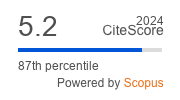Article | Open Access
Strategies for Engaging and Outreaching NEETs in Italy: Insights From Active Labour Policies
| Views: | 1327 | | | Downloads: | 2684 |
Abstract: Outreaching and engaging young people who are not in education, employment, or training (i.e., NEETs) represents a significant challenge for public policies. They often belong to marginalized and disadvantaged categories and find themselves isolated with low levels of trust in the future, in their capacities of finding a job, and, above all, in institutions. Much research has emphasized how insufficient and unsuitable the strategies used so far have proved to be. However, there is a lack of clear mapping in the literature of what approaches have been suggested and addressed by the different guidelines. This study explores the strategies that a specific active labour policy uses to intercept and engage vulnerable youth and NEETs. This research employed a qualitative methodology that centres on the examination of official documents of the regional plans for the guaranteed employability of workers (Garanzia di Occupabilità dei Lavoratori). To conduct the analysis, the MAXQDA software package was utilized, and a content document analysis was implemented. Three main themes emerged from the analysis: capillarity of services, digitalization, and communication, each with its respective sub-themes. These themes provide valuable insights into the current strategies employed to engage vulnerable NEET youth, as well as other demographic categories, highlighting the potential strengths and weaknesses of these policies. The study holds the potential to contribute significantly to the development of more targeted and sustainable public policies, aiming to address the challenges faced by vulnerable NEET youth in Italy.
Keywords: active labour policy; guaranteed employability for workers; Italy; NEETs; vulnerable youth
Published:
© Adriano Mauro Ellena, Maura Pozzi, Daniela Marzana. This is an open access article distributed under the terms of the Creative Commons Attribution 4.0 license (http://creativecommons.org/licenses/by/4.0), which permits any use, distribution, and reproduction of the work without further permission provided the original author(s) and source are credited.


